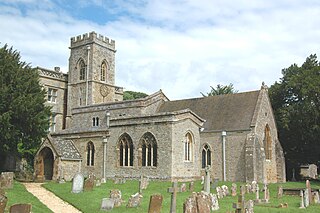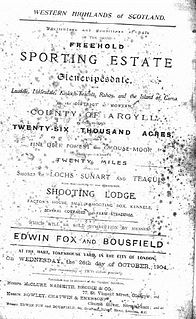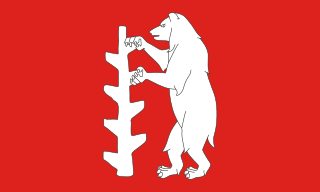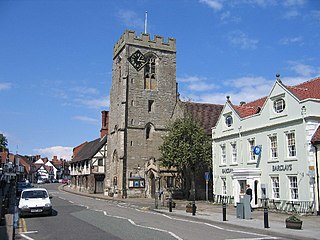
William Richard Arthur Pole-Tylney-Long-Wellesley, 5th Earl of Mornington was a British nobleman.

William Pole-Tylney-Long-Wellesley, 4th Earl of Mornington was an Anglo-Irish nobleman notorious for his dissipated lifestyle.

Sir James Tylney-Long, 7th Baronet was an English politician who sat in the House of Commons for 32 years from 1762 to 1794.

North Aston is a village and civil parish about 7 1⁄2 miles (12 km) south of Banbury and 10 miles (16 km) north of Oxford. The 2001 Census recorded its population as 212. The 2011 Census did not publish its population separately, but gave a combined total of 316 for the parishes of North Aston and Middle Aston.

The Glencripesdale Estate is a country estate situated along the south side of Loch Sunart, a sea loch in the west highlands of Scotland.

Rochford Hall is a manor in Rochford, Essex, England. During the reign of King Henry VIII, it belonged to Thomas Boleyn, who was then Viscount Rochford, and it was the marital home of his daughter Mary Boleyn, sister of Anne Boleyn, and Mary's second husband, Sir William Stafford. It is now privately owned by Rochford Hundred Golf Club where it acts as the clubhouse and is a Grade I listed building.
Holmwood House in Redditch, Worcestershire, is a country house built for Canon Horace Newton of Glencripesdale Estate and Barrells Hall in 1893 by the famed Victorian architect Temple Lushington Moore, who was a vague relative of the Newton family. Rev Canon Newton was brother of Goodwin Newton of Barrells Hall, where Canon Newton also grew up.
Canon Horace Newton was a priest within the Church of England, philanthropist, and country landowner.
Thomas Henry Goodwin Newton (1835–1907) was the chairman of Imperial Continental Gas Association, one of the United Kingdom's largest energy businesses. He used "Goodwin" as his main christian name, which became a family middle name for generations afterwards.

The Long, later Tylney-Long Baronetcy, of Westminster in the County of London, was a title in the Baronetage of England. It was created in 1661 for Robert Long.

Robert Knight, 1st Earl of Catherlough, KB, (1702–1772), was a British Member of Parliament for Great Grimsby, Castle Rising, Norfolk (1747–54) and Milborne Port, Somerset (1770–72). He became successively Baron Luxborough (1745), Viscount Barrells and Earl of Catherlough, all titles within the peerage of Ireland. His wife, Henrietta Lady Luxborough, later became well known as a lady of letters, poet and pioneering landscape gardener.
Louis Henry Scipion, Count Durore (1763–1822) was a French revolutionary and English radical.
Robert Knight (1768–1855) was an English reforming radical and Member of Parliament.
John Dalton (1709–1763) was an English cleric and poet. He is now remembered as a librettist.

Henrietta Knight, Lady Luxborough, was an English poet and letter writer.
Longe is a surname of Anglo-Norman origin. The name Longe derives from the Anglo-Norman French ‘Lung’ or ‘Lang’ for tall or high. The family descend from the noble family of de Préaux who were barons in Préaux, Roumois and Darnétal, Normandy. Variants of the name include: le Long, de Long, Le Lung, Longe, Long and Longue. The family are believed to have arrived in England following the Norman Conquest and during the early 13th century divided into two branches, the Wiltshire branch and the Norfolk branch. In the Hundred Rolls of 1273, early variations have been found including, Henry le Longe in Buckinghamshire, John le Longe in Huntingdonshire; and Walter le Longe in Shropshire.
Whateley Hall was a stately home in the Warwickshire countryside near Castle Bromwich.















